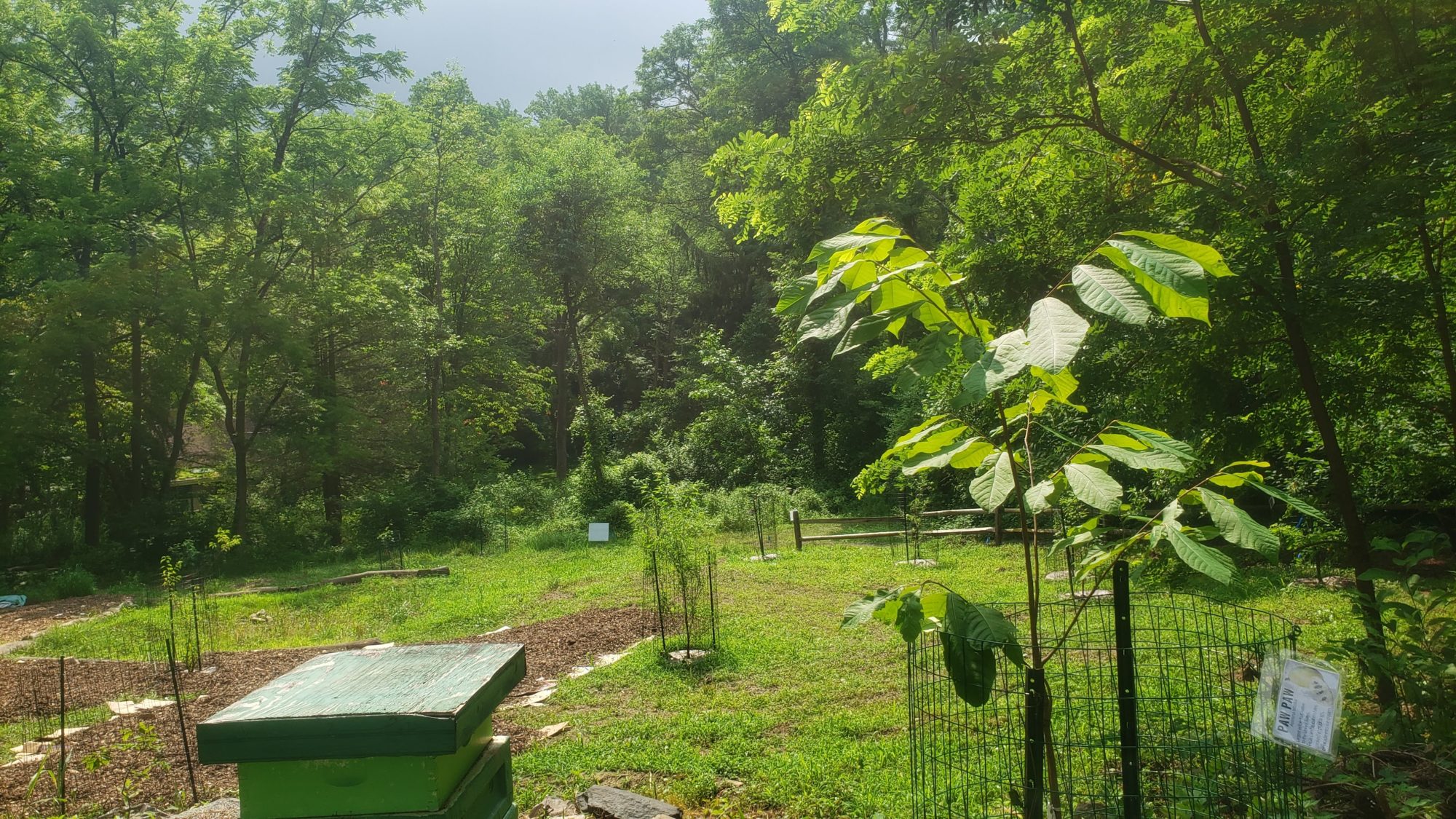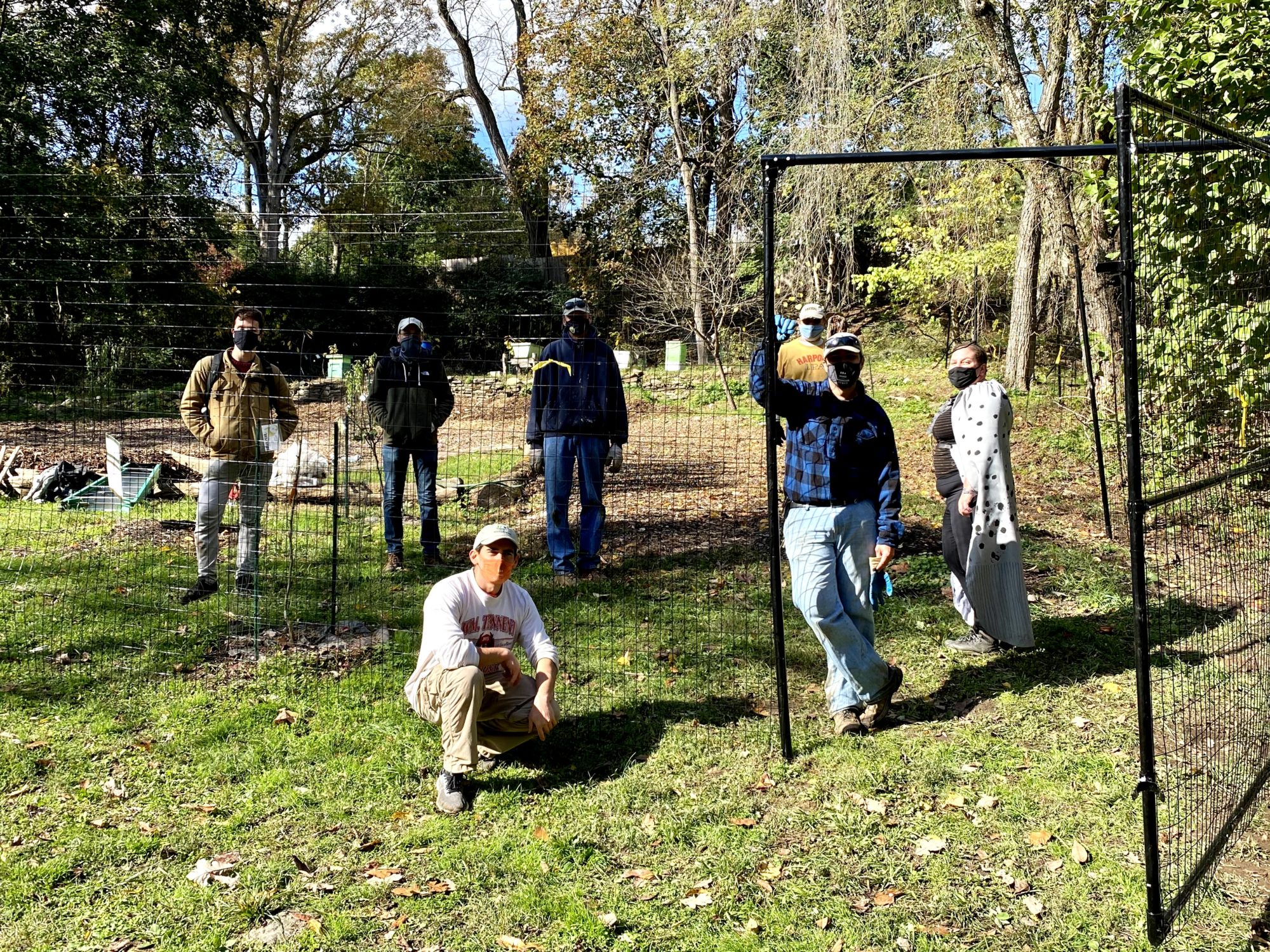
Earlier this year, POP had the opportunity to work with the Wissahickon Environmental Center (WEC), or the “Tree House”, on a new food forest project. Situated in the Wissahickon Valley Park, part of Philadelphia’s Parks and Recreation Park System, WEC provides environmental education to all visitors, through low to no-cost programming for adults, children, and families. Besides its educational mission, WEC also provides intentional and sustained stewardship of public land and waterways in order to maintain and support the Wissahickon’s biodiversity. This food forest is another step to expand WEC’s educational programs and its network of supportive landscape structures. This blog post, based on emails exchanged with Christina Moresi, WEC’s Environmental Planner, aims to share their inspiring stories and visions for WEC’s programming with the installation of the new food forest. The WEC food forest planting was made possible by a grant from the Philadelphia Chapter of the Garden Club of America.
Another contribution to the maintenance of the balance of biodiversity for the Wissahickon’s wildlife

Before the Food Forest was planted, the area was overwhelmed with invasive vines and shrubs. As WEC staff and volunteers cleared the space, there is more room for native plants, animals of all kinds (“chipmunks, spiders, snakes, toads, and a HUGE buck”), and additional landscape structures.
According to Christina, “WEC’s Food Forest contributes to the balance of biodiversity for the Wissahickon’s Wildlife by providing a wide range of woody plant and herbaceous species. These plant species support the diversity in and of themselves, as well as the pollinator species that utilize their nectar and pollen, and the food web that exists because of these plants, insects, and so forth.
We have existing honey bee hives. Two are active with managed honey bees, and two other hives that have been empty are now occupied by a mouse family, and a fairly large milk snake, a rare sighting for us. Snakes are always welcome in gardens as they keep the pest population down. We have spotted numerous garter and ringneck snakes, including one garter eating a toad! The mouse nests will be used in the spring to create bumblebee houses. Other native bee houses will also be added to the Food Forest to support their declining population and pollination of our plants. “

“WEC’s Food Forest contributes to the balance of biodiversity for the Wissahickon’s Wildlife by providing a wide range of woody plant and herbaceous species”
Various educational and recreational programs that connect people to nature and the wild Wissahickon
WEC environmental educators Trish Fries and Christina Moresi work together to plan programming for children, families, and adults. They strive to “respectfully utilize the land around us and connect others to it through educational hikes, sustainability activities, outdoor adventures, and specialties, such as candle dipping, campfire cooking, creek study, stone soup, paper kite making, and more.” The children’s programs, specifically, strive to exemplify the idea of unstructured, outdoor play where children are free to lead their own adventures and learning, practicing risk assessment, and other outdoor safety skills with support from staff.
About incorporating the new Food Forest into WEC programs, Christina mentioned that the space sparks endless possibilities. “Usable plant programs, such as maple sugaring, cider pressing, spring teas, edible invasives, and black walnut dye”, according to Christina, “sparked the dream of a food forest in our perfectly full sun, underutilized space. The new Food Forest will add depth and diversity to our current edible plant programs. We will also be able to lead additional programming such as plants for poison ivy soothing and tick repelling, food forest/edible plant care, sustainable harvest of wild and cultivated plants, plant propagation, herb drying, and tea mixing, new-to-you food adventures, cidering other than apples, cidering for grown-ups, campfire pies…”.
The place also inspires the incorporation of fresh food access, donations, growing lessons (i.e. container gardening and kitchen herbs), etc. to WEC’s existing programs.
Overcoming challenges with teamwork and hard work
Christina also shared the challenges during the Food Forest planting: “Our biggest challenge was water and vehicle access to the orchard site, but we knew this going into the adventure. Our Gator, before it was stolen, was our greatest tool. After that, it was the wheelbarrow. Eventually, our driveway was fixed from storm damage, and the City’s small dump truck and Christina’s 4×4 were able to get up the access road to bring woodchips and other materials. For water, we strung together about 400 feet of hose to fill the tree bags at least once a week, depending on rain. And carried five-gallon water bottles to the top of the orchard, where the hose did not reach. All of this was simply an opportunity to practice patience and teamwork, and we got the jobs done.”

“It was this team work, and the hard work of removing the invasive vines and shrubs, that was our biggest accomplishment.”
The Covid-19 pandemic shut the Center down for the spring and summer to programming and visitors. Although devastated about not having school groups, summer camp, or Mud Day, WEC staff and members then had April- August to focus solely on the orchard- acquiring materials, sheet mulching, watering, tree care, weeding, invasive removal, etc. “I think this gave us the sanctuary we needed to escape the world, and fully enjoy our time in the orchard. It was this teamwork, and the hard work of removing the invasive vines and shrubs, that was our biggest accomplishment. I think there was some doubt in the beginning as to whether or not we would be able to clear, plant, and protect the area between spring and fall. I won’t say by whom, but we proved ourselves worthy of the honor of having a POP Food Forest, and we will continue to strive to grow with our Food Forest, sharing it with all of our neighbors.”
SUPPORT US! If you found this entry useful, informative, or inspiring, please consider a donation of any size to help POP in planting and supporting community orchards in Philadelphia: phillyorchards.org/donate.